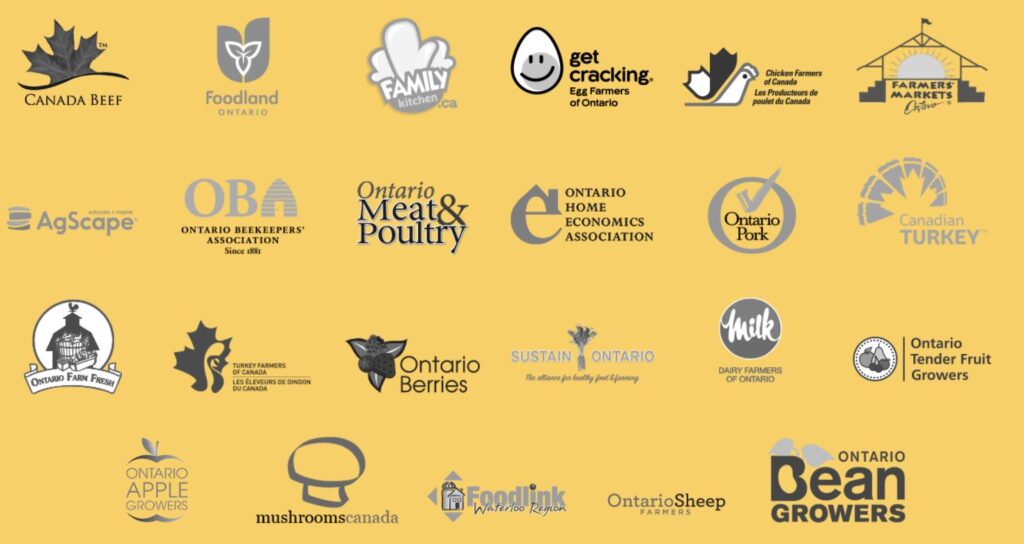By Kaylee Coverdale
Editor’s note: Kaylee Coverdale is the Events and Programs Coordinator for the Ontario Federation of Agriculture (OFA). She can be contacted at kaylee.coverdale@ofa.on.ca.

A silver lining of the COVID-19 pandemic is that families are spending more time at home and in the kitchen discussing the origins of food, how it is produced, food security and favourite recipes. Food has always been a key ingredient in bringing people together, and during these challenging times when so many of us are apart, food continues to keep us connected.
Although food brings us to the table, there is still an increasing knowledge gap of where it comes from, how it is grown, who grows it and how to source it. Many people are now generations removed from the family farm, and food literacy rates remain low among much of the general population.
Increasing knowledge and understanding of food literacy has been a key priority of the Ontario Federation of Agriculture (OFA) for several years. Food literacy is an awareness of how to make choices that help consumers develop good food habits for a lifetime of health. It is in the best, long-term interests of the agri-food sector to work together to help consumers develop a greater awareness and appreciation of food and how dietary choices can impact themselves and their families.
Food literacy is key for making healthy choices
Understanding where food comes from and knowing how to make healthy choices helps young people especially establish good eating habits. Becoming more food literate encourages consumers to choose products that support local agricultural communities, helping grow the economy in the process.
In 2017, to address the scope of local food knowledge, understanding and awareness, OFA, with support from the Government of Ontario, in partnership with the Greenbelt Fund, developed the ‘Food Literacy Attitude and Awareness Research Project.’
The Food Literacy Attitude and Awareness Research Project was the first step in establishing a baseline level of food literacy knowledge and understanding among Ontario consumers. The project’s advisory committee included the Nutrition Resource Centre – Ontario Public Health Association, Ontario Home Economics Association, AgScape, and Farm and Food Care Ontario.
The project surveyed three distinct groups of Ontario consumers: parents with children at home, adolescents aged 13- to 17-years-old, and adults aged 18- to 26-years-old who are living on their own. The survey measured the current level of food literacy among the three groups to develop baseline data and gain insights to guide future programs, resources and information. Two in-person focus groups were held to gather qualitative data on food literacy that was used to develop and launch an online survey, which garnered more than 1,000 responses. The survey collected quantitative data on local food, meal planning, purchasing, preparation and consumption in the home, and sources of information used by consumers.
The results of the project highlighted that only 28 per cent of teenagers know how to plan and prepare a quick, healthy meal using the food that is readily available to them in their household. The study also found that millennials seek health and nutrition information from a wide variety of sources, with more than 50 per cent of them relying on YouTube as a source for learning new food information and cooking skills.
Bridging the food literacy gap

Participating in meal preparation and observing it in the home is the most common way to learn kitchen and cooking skills, making it increasingly important for teenagers to get involved in the kitchen. Due to the significance of this type of learning, it is essential parents are comfortable with cooking skills and have an adequate knowledge of health and nutrition.
OFA is addressing the challenge through the ‘Six by Sixteen’ food literacy initiative. Six by Sixteen was launched to raise the profile of buying fresh, safe and affordable local food. The collaborative program, with more than 20 provincial and national industry partners, aims to teach young people how to plan and prepare six nutritious and locally sourced meals by the time they are 16-years-old. Six by Sixteen’s website hosts a dietitian-developed recipe guide, which is freely downloadable, featuring eight nutritious and locally sourced recipes.
The website – SixbySixteen.me – was developed as an online gateway to an extensive library of Canadian resources, including how-to cooking videos, recipes and where to source local Ontario-grown products. The online hub was created for parents, health professionals and young teens to leverage the program.
Additionally, OFA has partnered with education and awareness groups to bring Six by Sixteen and food literacy to local communities. In collaboration with 4-H Ontario, OFA’s food literacy initiative has been adapted for 4-H participants to learn about knife safety, proper handwashing, safe food handling and meal preparation. Six by Sixteen is also promoted through by OFA at consumer-facing events, such as Farm & Food Care Ontario’s Breakfast on the Farm and the Royal Agricultural Winter Fair.
COVID-19 drives digital education push

With the cancellation of in-person events, and with teens spending more time at home with limited access to recreational activities, OFA has taken the opportunity to develop its digital platforms.
With the help of Growing Chefs Ontario, Six by Sixteen has launched a virtual food literacy challenge. Six by Sixteen’s recipe guide was recreated using a digital format with videoed cooking tutorials for families to watch from the safety and convenience of their own homes.
In keeping true to Six by Sixteen’s slogan, youth challengers need to prepare only six of the eight recipes to complete the challenge. Submissions can be made by emailing photos of completed meals to sixbysixteen@ofa.on.ca or sharing them to social media by tagging @SixbySixteen using the hashtag #virtualchallenge6x16. Videos can be accessed directly from the Six by Sixteen website or by visiting YouTube.com/OntarioFarms.
The pivot to virtual also strengthened existing partnerships with fellow industry stakeholders and led to the creation of several food literacy projects. To further promote the importance of local food, Six by Sixteen, under OFA’s ‘Always in Season’ project, and in partnership with South Central Ontario Region Economic Development Corporation (SCOR EDC), developed the ‘Agriculture is Always in Season’ colouring book. The book is directly available on the Six by Sixteen website and lets kids get creative while celebrating the abundance of healthy food produced by local farmers. The book also features a food literacy crossword, an Ontario agriculture infographic and a wordsearch.
As more families turn to their own kitchens and spend time together, the Six by Sixteen challenge is more attractive than ever. All families are encouraged to get their kids and teens involved by accepting the Six by Sixteen challenge. It is a fun, family-oriented tool for teaching and engagement, promoting Ontario’s agri-food sector in the process. Get started today at SixBySixteen.me.





